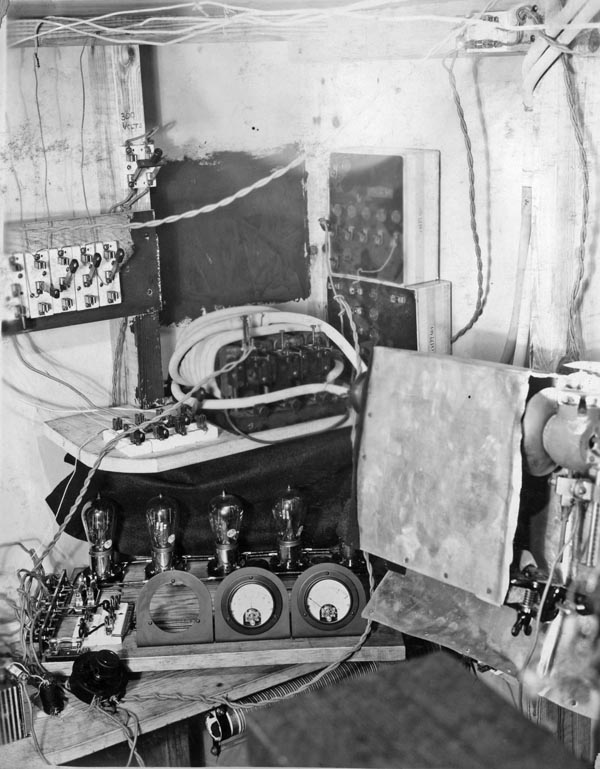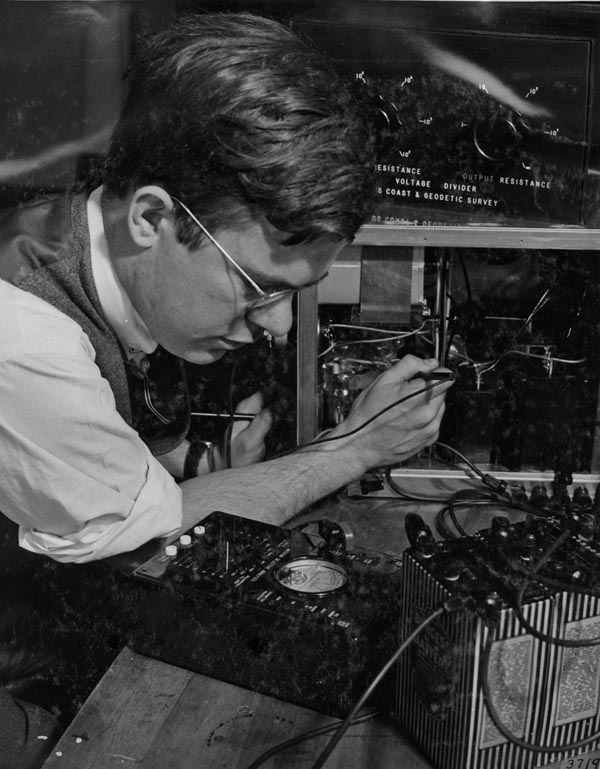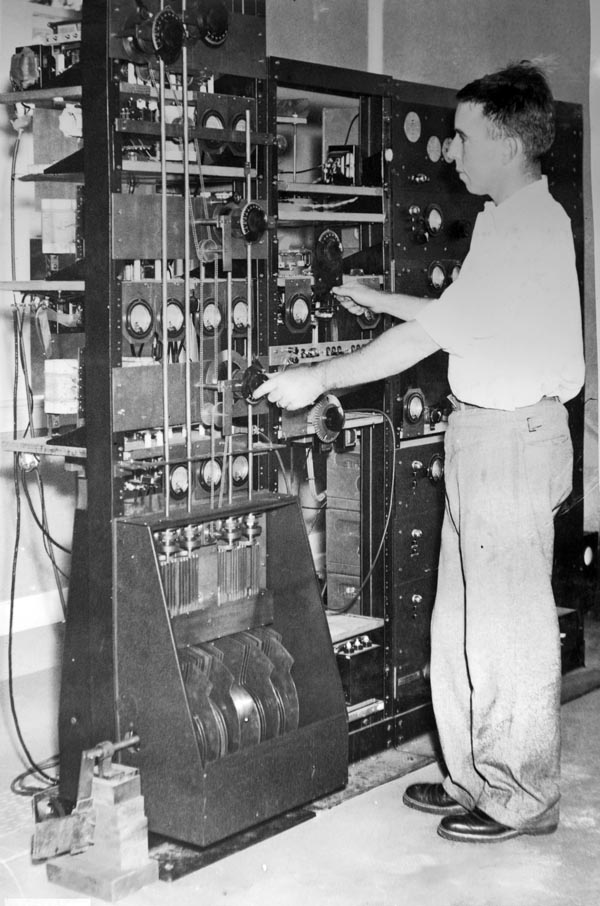Ionospheric Sounders
 |
| Equipment used in Breit and Tuve’s 1925 Kennelly-Heaviside experiments, Image No. I946. |
In 1924, Gregory Breit, a young physicist at the Department of Terrestrial Magnetism proposed an experiment to determine the existence of conducting layer, now known as the ionosphere, in the Earth’s upper atmosphere. Arthur Edwin Kennelly in the United States and Oliver Heaviside in England had separately postulated in 1902 on the existence of such a layer. The “Kennelly-Heaviside Layer” was presumed to cause refraction of radio waves and thus allowed long-distance radio communication, but experimental proof of the layer was still not accepted in the 1920s. There was a clear need for radio research to verify the ionosphere and, if possible, to determine its structure.
DTM’s director at the time, Louis Bauer, approved of Breit’s interest in the upper conducting layer. There existed some evidence that not all of the Earth’s magnetic field was a result of internal forces but that large electric currents in the upper atmosphere may be partially responsible, and thus Breit’s experiment would fall under the geomagnetic interests of DTM. Breit soon convinced Merle Tuve, an old friend from their days at the University of Minnesota, to join him on the project.
After abandoning Breit’s initial proposal to construct a large reflector in the form of a paraboloid, the pair chose to use Tuve’s idea of a radio-echo souding method for the experiment. A receiver would be set up at a separate location from a transmitter, and the receiver output would be connected to a string-galvanometer oscillograph. The wave travelling directly between transmitter and receiver would arrive before any signal that had been reflected from the conducting layer. Their first attempts used borrowed equipment from the Pittsburgh station KDKA, but these failed due to the large swing in modulating voltage pulling the transmitter frequency.
 |
| Lawrence Hafstad with an audio-frequency oscillator and voltage divider in April 1935, Image No. I3719. |
Then, however, the Naval Research Laboratory allowed Breit and Tuve to use their radio research equipment which employed a transmitter with new stable quartz-crystal-controlled oscillators. The radio echoes observed in these new tests exhibited steady time delay variation, which was consistent with a conducting layer in the upper atmosphere of variable distance. The equipment used in these early ionospheric experiments is well represented in the photograph collection.
 |
| Harry Wells testing experimental automatic multifrequency equipment at Kensington in September 1936, Image No. I4167. |
After Breit and Tuve’s interests turned toward atomic physics in 1928, Odd Dahl and Lawrence Hafstad continued research on the upper conducting layer at DTM. Director of DTM, John Fleming, hired Lloyd V. Berkner in 1933 to continue ionospheric research at DTM. Berkner built an improved multifrequency automatic ionospheric sounder on land acquired by DTM near Kensington, Maryland. The sounder could complete a sweep in 15 minutes and operated over a frequency range of 0.5 to 16 MHz. Transmitter and receiver frequencies were held together tightly to ensure its utility. Numerous images of this equipment taken from multiple angles are found in the photograph collection. Automatic instrumentation of this kind was installed at DTM’s already established magnetic observatories in Huancayo, Peru in 1937 and in Watheroo, Australia in 1938, at which manual equipment had been earlier installed in 1932.
The Department’s ionospheric work expanded during World War II under the auspices of the armed services, and DTM established stations around the world that accumulated data which allowed for the prediction of ionospheric conditions, assisting in the enhancement of radio communication. Multiple images of these stations and the equipment they contained are housed in the photograph collection.
